Morton's neuroma pathophysiology
|
Morton's neuroma Microchapters |
|
Diagnosis |
|---|
|
Treatment |
|
Case Studies |
|
Morton's neuroma pathophysiology On the Web |
|
American Roentgen Ray Society Images of Morton's neuroma pathophysiology |
|
Risk calculators and risk factors for Morton's neuroma pathophysiology |
Editor-In-Chief: C. Michael Gibson, M.S., M.D. [8]; Associate Editor(s)-in-Chief: Sara Mohsin, M.D.[9]
Overview
Morton's neuroma is associated with symptomatic collapse of the transverse arch by perineural fibrosis around a plantar digital nerve of the foot due to chronic traction and increased pressure/compression on the interdigital nerve. It is located at the third intermetatarsal space most commonly (between third and fourth metatarsals), and sometimes second or fourth interspaces or bifurcation of the fourth plantar digital nerve. Gross pathological features of morton's neuroma include adherent fibrofatty tissue, small, firm, oval, yellowish-white, slowly growing, palpable nodule on skin (no discoloration of skin on the top of nodule) and </=2cm in size. Histopathological analysis is characterized by extensive fibrosis around and within the nerve, digital artery, thrombosis, epineural and endoneural arterial thickening/vascular hyalinization, and degenerated/demyelinated axons. Possible tissue pathologies associated with interdigital pain of morton's neuroma include perineural fibrosis, endoneural edema, neurofibromata, angioneurofibromata, local demyelination, and local vascular degeneration.
Pathophysiology
Pathogenesis
- Morton's neuroma is associated with symptomatic collapse of the transverse arch by perineural fibrosis around a plantar digital nerve of the foot due to chronic traction and increased pressure/compression on the interdigital nerve[1][2][3][4][5][6]
Location
- Morton's neuroma is characterized by being located at the:
- Third intermetatarsal space most commonly (between third and fourth metatarsals)[7]
- Second or fourth interspaces
- Bifurcation of the fourth plantar digital nerve
 |
 |
 |
Gross pathology
- On gross pathology, characteristic findings of morton's neuroma, include:[8][9]
Histopathology
- On microscopic histopathological analysis, characteristic findings of morton's neuroma include:[10][8][9][2]
- Extensive fibrosis around and within the nerve
- Digital artery
- Thrombosis
- Epineural and endoneural arterial thickening/vascular hyalinization
- Degenerated/demyelinated axons
Possible tissue pathologies associated with interdigital pain of morton's neuroma
Possible tissue pathologies associated with interdigital pain of morton's neuroma include:[11]
- Perineural fibrosis
- Endoneural edema
- Neurofibromata
- Angioneurofibromata
- Local demyelination
- Local vascular degeneration
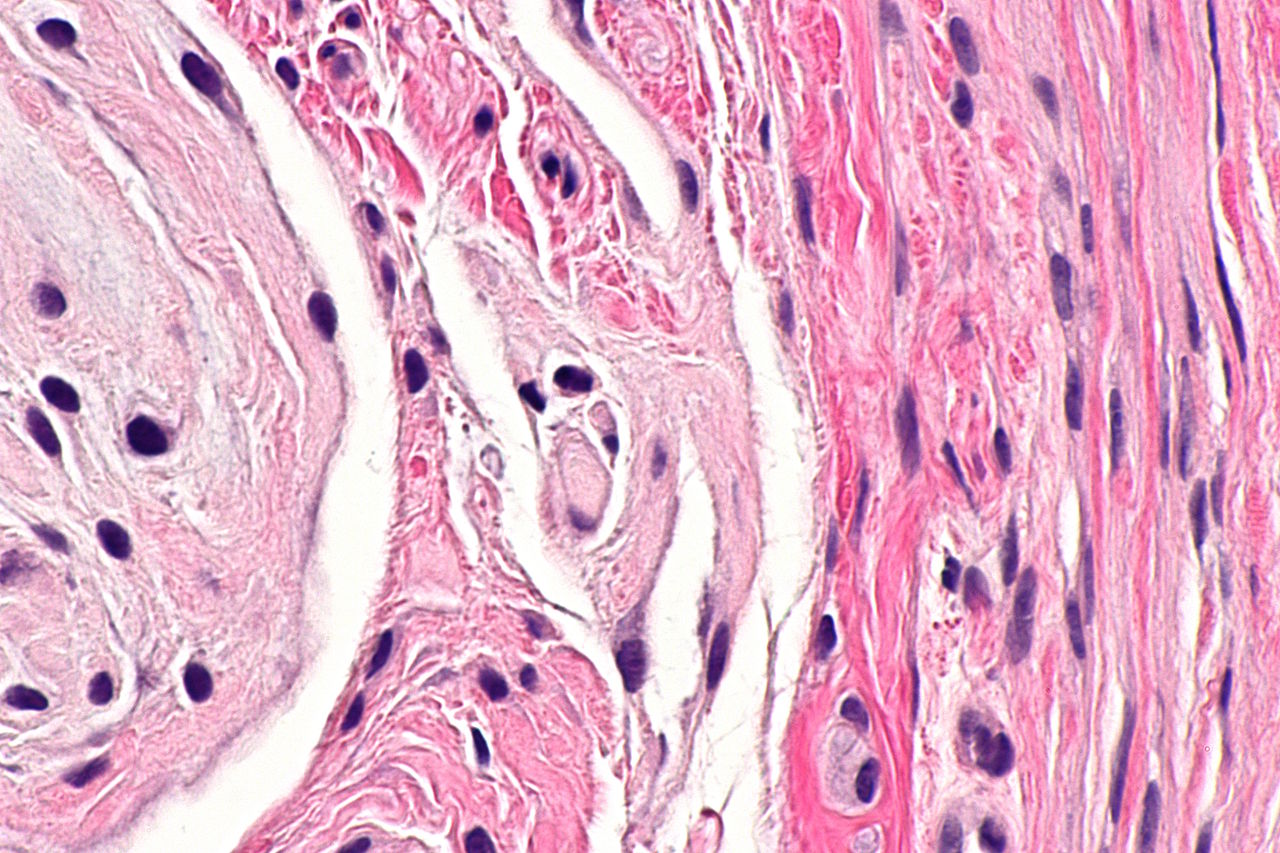
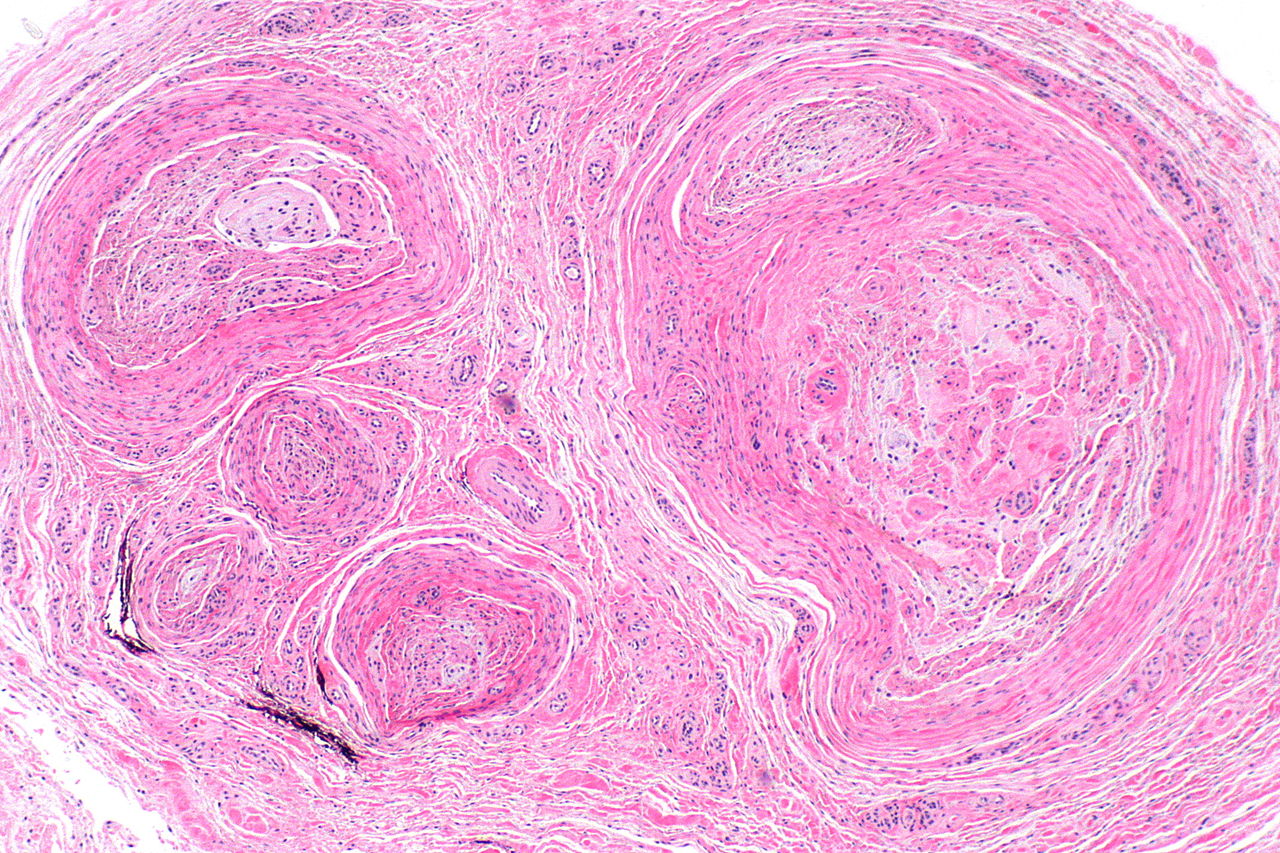 |
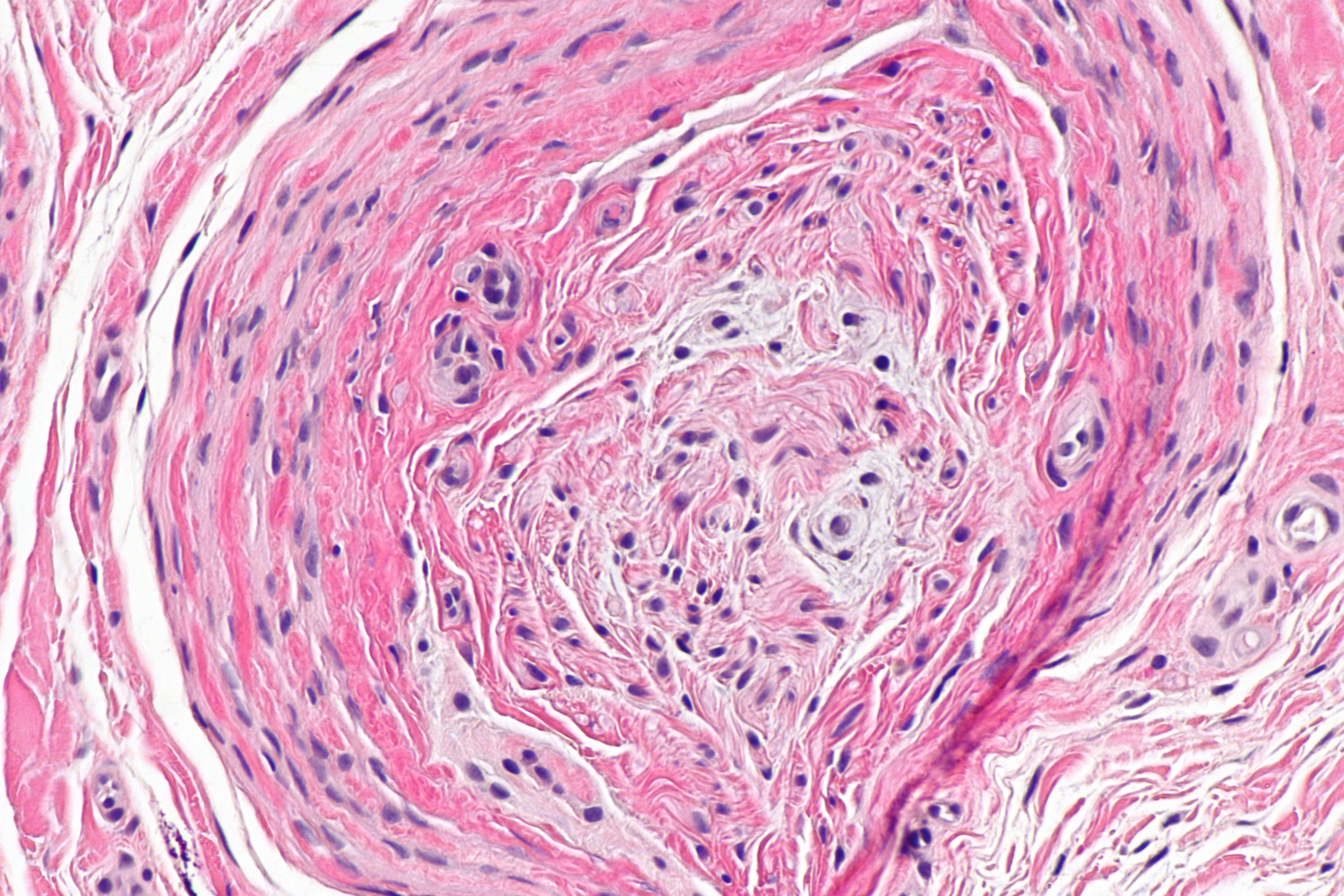 |
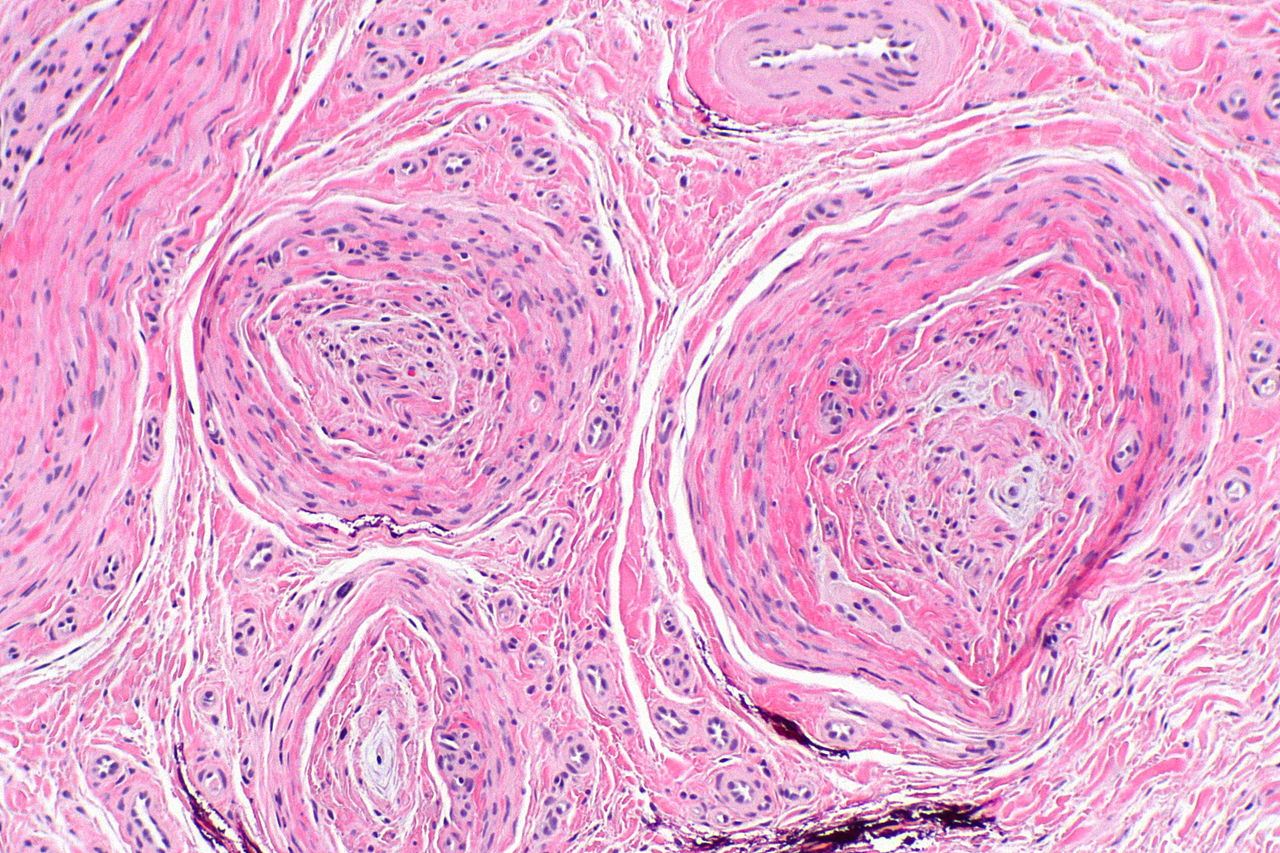 |
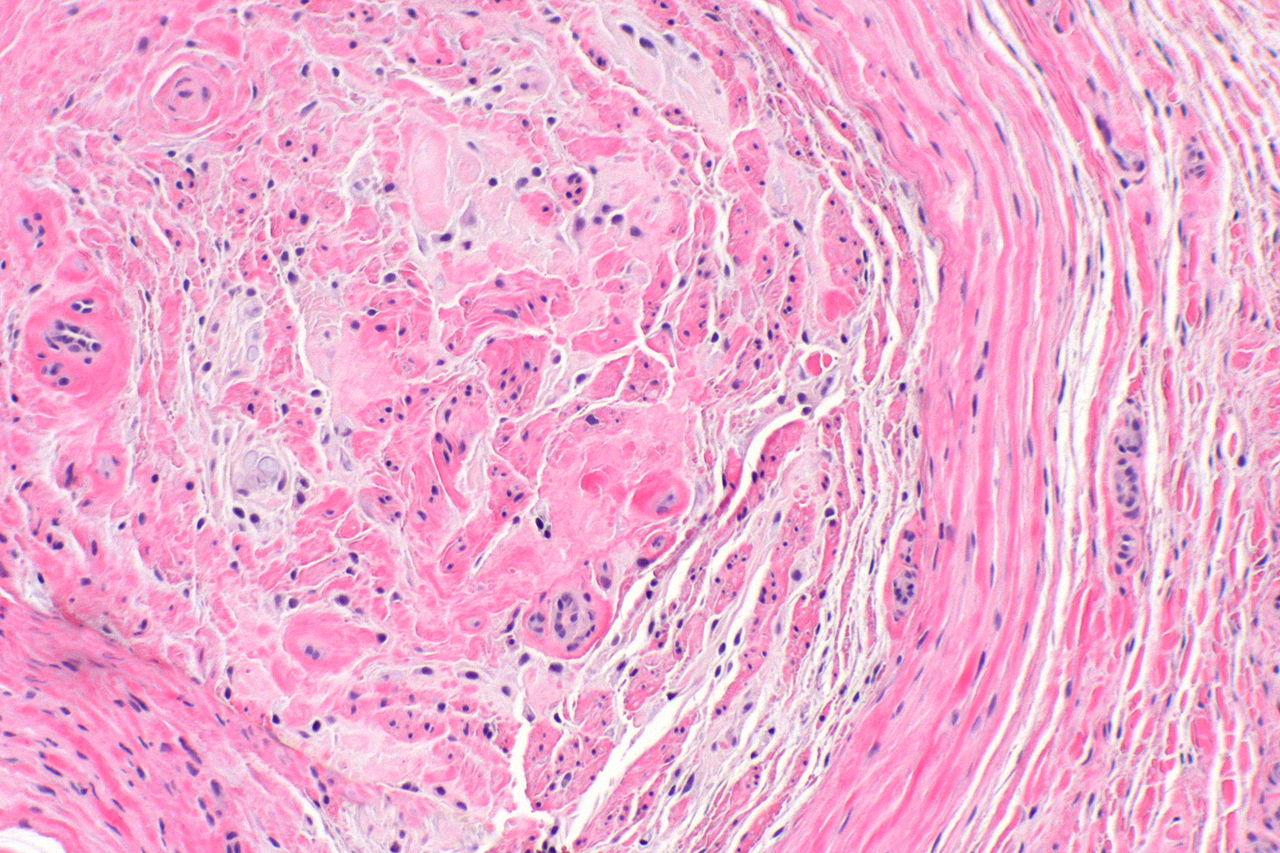 |
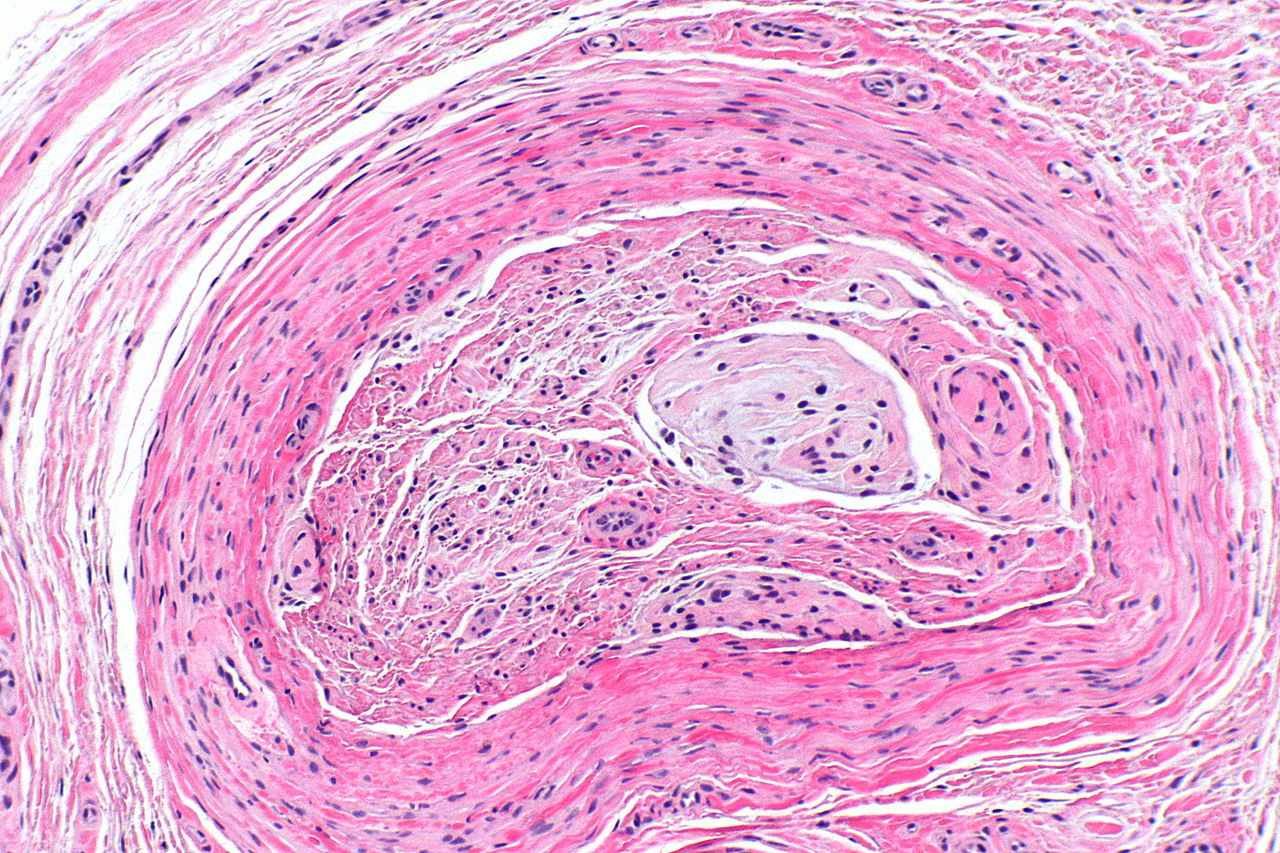 |
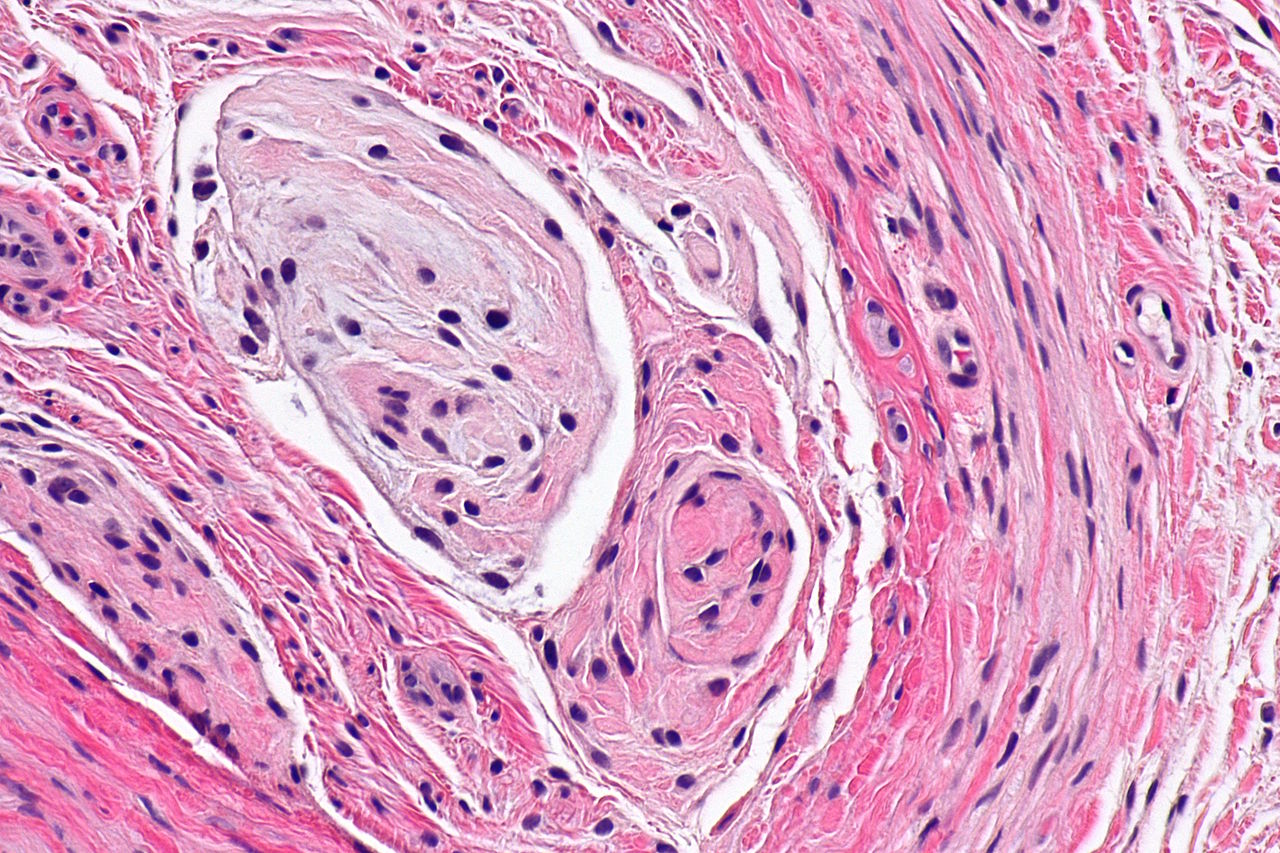 |
References
- ↑ Kim JY, Choi JH, Park J, Wang J, Lee I (2007). "An anatomical study of Morton's interdigital neuroma: the relationship between the occurring site and the deep transverse metatarsal ligament (DTML)". Foot Ankle Int. 28 (9): 1007–10. doi:10.3113/FAI.2007.1007. PMID 17880876.
- ↑ 2.0 2.1 Read JW, Noakes JB, Kerr D, Crichton KJ, Slater HK, Bonar F (1999). "Morton's metatarsalgia: sonographic findings and correlated histopathology". Foot Ankle Int. 20 (3): 153–61. doi:10.1177/107110079902000303. PMID 10195292.
- ↑ Bencardino J, Rosenberg ZS, Beltran J, Liu X, Marty-Delfaut E (2000). "Morton's neuroma: is it always symptomatic?". AJR Am J Roentgenol. 175 (3): 649–53. doi:10.2214/ajr.175.3.1750649. PMID 10954445.
- ↑ Bourke G, Owen J, Machet D (1994). "Histological comparison of the third interdigital nerve in patients with Morton's metatarsalgia and control patients". Aust N Z J Surg. 64 (6): 421–4. PMID 7516653.
- ↑ Wu KK (1996). "Morton's interdigital neuroma: a clinical review of its etiology, treatment, and results". J Foot Ankle Surg. 35 (2): 112–9, discussion 187-8. PMID 8722878.
- ↑ Post MD (2019). "Mechanical Diagnosis and Therapy and Morton's Neuroma: A Case Report". Physiother Can. 71 (2): 130–133. doi:10.3138/ptc.2018-42. PMC 6484954. PMID 31040508.
- ↑ Perry, Arie (2010). Practical surgical neuropathology : a diagnostic approach. Philadelphia, PA: Churchill Livingstone/Elsevier. ISBN 978-0443069826.
- ↑ 8.0 8.1 Neuroma. Wikipedia. https://en.wikipedia.org/wiki/Neuroma Accessed on April 21, 2016
- ↑ 9.0 9.1 Wu J, Chiu DT (1999). "Painful neuromas: a review of treatment modalities". Ann Plast Surg. 43 (6): 661–7. PMID 10597831.
- ↑ Neuroma. Radiopedia http://radiopaedia.org/cases/morton-neuroma-2 Accessed on April 21, 2016
- ↑ "intermetatarsal bursitis | The Foot and Ankle Online Journal".